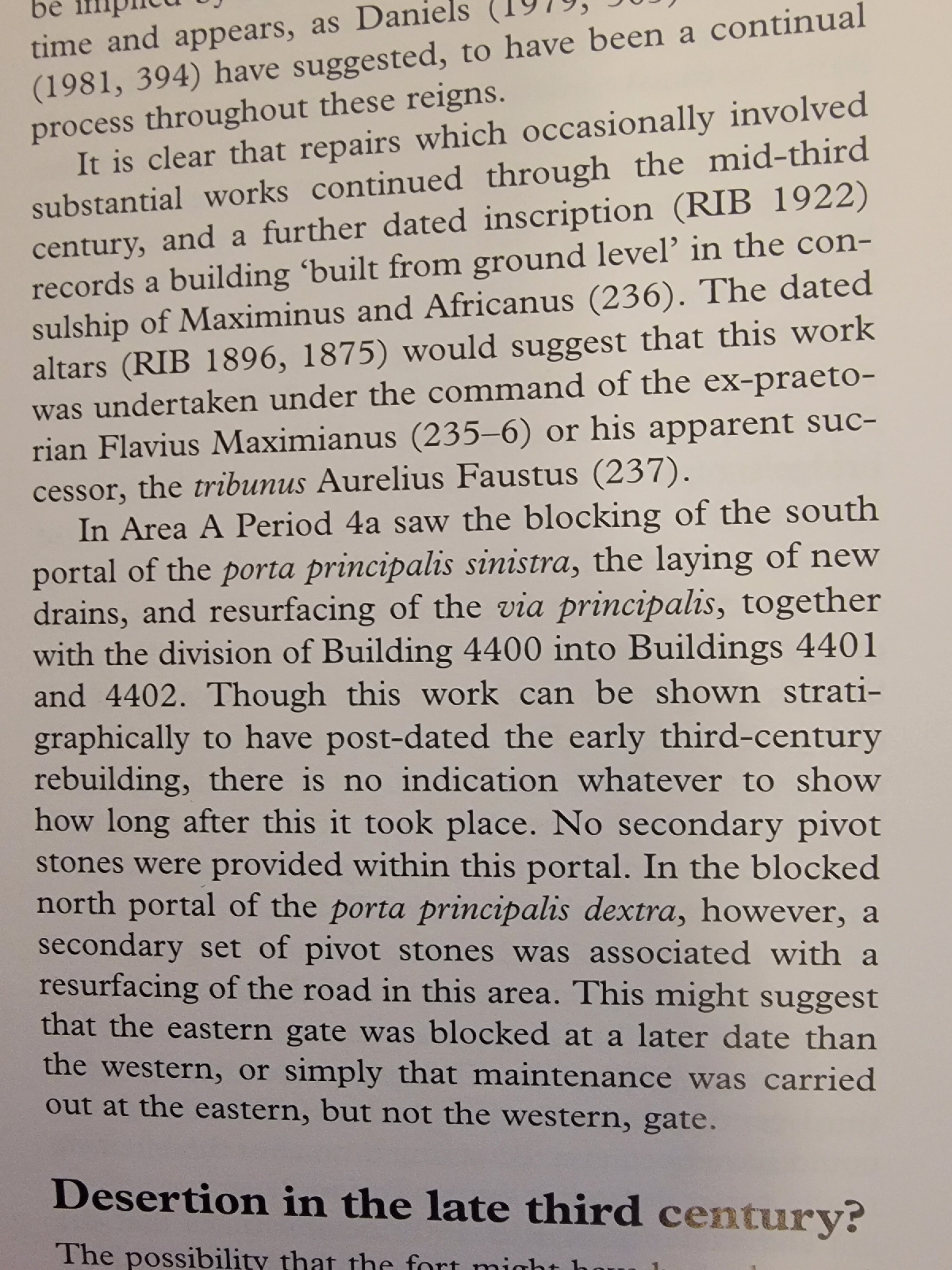Camboglanna
Castlesteads Stone to the Emperors Severus, Caracalla and Geta
The goal of any good historian is try to come up with the best, most plausible scenario to explain scant facts. Magical thinking does not form a component of this process.
The other day, while at work, I was thinking (not about work, obviously!). Is there a historically attested Arthur that we can situate at a real Camlan?
Well, there is - but just one.
L. Artorius Castus is a bonified historical entity. But here comes the tricky part: if we accept that his being made governor of a newly formed Liburnian province with the right of the sword happened because the Empire found itself in an emergency situation, and we accept the time range scholars allow us for his memorial inscription, then we are looking at one of the following possibilities for his governorship:
1) at the onset of the Marcomannic Wars, meaning the ARM[...]S lacuna stands for ARMENIOS
or
2) at the second round of barbarian invasions under Caracalla, meaning that lacuna should be ARM[ATAS] GENTES
If we choose the second (and for all the reasons I've been posting in my last severeal recent posts, this seems the most logical choice to me), then we can actually entertain the notion that Castus may have visited Camboglanna/Castlesteads Roman fort - and maybe even have been in on the rebuilding of the fort there. After all, legionary soldiers were major builders of roads and forts.
Alas, the Castlesteads House estate early on, in order to construct their manor and garden, systematically destroyed the Camboglanna fort. We have precious little remaining from it. One of the stones we do have is pasted at the top of this blog. Its inscription is described as follows at the RIB page cited:
Apparatus
3, 4. avg …|vsti, Carlisle, &c.; avg⟦gg⟧|vsti, Lys., F.H.
Translation
Primary
To the Discipline of the (three) August (Emperors).
Secondary
To the Discipline of the August (Emperor).
Commentary and notes
Primary: a.d. 209-11 Severus, Caracalla, Geta; secondary: a.d. 212-17 Caracalla.
For Septimius Severus as vindex et conditor Romanae disciplinae see EE vii 353, CIL viii 17870 (ILS 446) Thamugadi.
Fortunately, we do know that substantial work was done by Severus and Caracalla at the neighboring Hadrian's Wall fort of Birdoswald/Banna. Here are some pages from Tony Wilmott's archaeaological report on the Birdsowald excavations of 1987-72:
Simon Elliott in SEPTIMIUS SEVERUS IN SCOTLAND also discusses the major rebuilding on both walls - Hadrian's and the Antonine - under Severus:
It does not seem reasonable to object to the notion that similar rebuilding was undertaken at Camboglanna by both Severus and Caracalla.
So might Castus have been at Camboglanna?
Absolutely.
It is possible, I suppose, that the presence of an Artorius at Camboglanna may have contributed to the story of Arthur dying at Camlan (see https://mistshadows.blogspot.com/2025/02/camlan-as-folk-relocation-of-dalriadan.html). If so, it is an amazing coincidence that there are Camlans in Mawddwy, a regional name that seems to have been used as the justification for relocating the Maeatae battle of an Arthur from Scotland to Wales.
I have identified the *Artenses or People of the Bear (W. Arthwys) with residents of the Irthing Valley. The Irthing has been identified as a bear river-name by Andrew J. Breeze. Both Birdoswald and Castlesteads are in the Irthing Valley. It is possible, as I have from time to time theorized, that Artorius as a perceived bear-name among the Cumbric population of the region was linked to the Artenses and the Irthing.









No comments:
Post a Comment
Note: Only a member of this blog may post a comment.